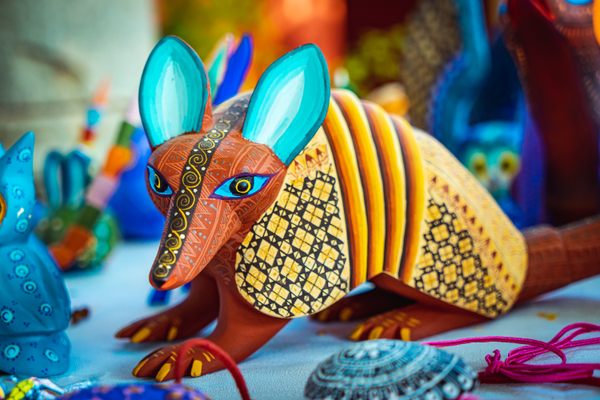7 Stories to Toast To Cinco de Mayo
Replace that margarita with vino de cocos.
Over the last half-century Cinco de Mayo has morphed from a relatively quiet commemoration of the Mexican army’s victory over French troops in the Battle of Puebla on May 5, 1862, into a United States-centric celebration, usually centered around tacos and margaritas (and often mistaken for Mexican Independence Day, which is actually September 16). But this year Atlas Obscura is marking the occasion with a deep dive into Mexico’s culture from the amber mines of the southern state of Chiapas to the floating farms of Mexico City to the mysterious Zone of Silence in the northern state of Durango. Plus: a shot of one of Mexico’s oldest spirits.
Mexico’s All-Female Mariachi Bands Are Shaking Up Tradition
by Laura Kiniry
Mexico’s mariachi heritage dates back at least to the 18th century. The genre of music and related culture began in the countryside of the west and later made its way into Guadalajara, Jalisco’s largest city. Now, finally in the 21st century, the genre is moving beyond its machismo-fueled roots. But while all-female mariachi bands are well-known outside of the country in cities such as Los Angeles and New York, they’re still fighting to find their place at home.

How This Tiny Mexican Town Has Saved Their Monarch Butterflies—For Now
by Vanessa Freije and Yolotzin Hernaádez
Every winter, hundreds of thousands of monarch butterflies migrate from Canada and the United States to central Mexico where they hibernate. For decades, deforestation, herbicides, and pest diseases have threatened those butterfly habitats. But at the Joya Redonda Monarch Butterfly Sanctuary, 50 miles south of Mexico City, hibernating monarch numbers have multiplied tenfold.
Exploring Mexico’s Zone of Silence, Where Radio Signals Fail and Meteorites Crash
by T.E. Wilson
There’s an area in Chihuahuan desert in northern Mexico where radio signals don’t work, and compasses spin out of control when placed near stones on the ground. It’s called the Zone of Silence, and this Mexican version of the Bermuda Triangle has its fair share of alien rumors.

Taxi Drivers in Xalapa Are on the Job in One of the Most Dangerous Cars Ever Made
by Dylan Taylor-Lehman
Taxi drivers are vital to Xalapa, a sprawling, hilly city of 750,000 in Veracruz, but the job’s challenges can be daunting. The economy, the pandemic, and the whims of local politicians have thrown up a range of obstacles for taxi drivers to overcome—all from behind the wheel of a Nissan Tsuru, Mexico’s de facto taxi and one of the most dangerous cars ever made.
Amber Mines in Mexico Offer Hope, Hazards, and “A Perfect Time Capsule”
by Emiliano Ruprah
The amber trade has been a fixture of life in Simojovel, a mountain town in Mexico’s southernmost state of Chiapas, for millennia. Nearly 4,000 years ago, the ancient Maya pierced their noses and ears with the fossilized resin; later, it became a form of tribute paid by the local Zinacatepec people to Aztec kings. Amber was not just prized as a jewel; it was also believed to possess magic healing and protective properties. Today, curanderos, local shamans, still claim to cure arthritis with amber and egg white potions.

How to Feed a Megacity Like the Aztecs
by Reina Gattuso
When Conquistador Hernán Cortés reached Tenochtitlan in 1519, he beheld an island metropolis surrounded by floating gardens known as chinampas, which fed the city. Today, the parched asphalt streets of Mexico City—built on top of the filled-in lake—show little trace of these lush Edens. But if you head to the southern borough of Xochimilco, where the cusp of the city touches the countryside, the landscape still bears an ancient crisscross of canals. Some of these chinampas have been in use since Aztec times.
Is This Mexico’s Oldest Spirit?
by N.C. Stevens
In the Mexican state of Colima, one man is reviving vino de cocos, a spirit made from the fermented sap of the common coconut palm that may have been Mexico’s original distillate before it disappeared in the 1700s. “Vino de cocos was a myth for most of us,” says distiller Jorge Velasco Rocha. “We never had the opportunity to have it until today.”






































Follow us on Twitter to get the latest on the world's hidden wonders.
Like us on Facebook to get the latest on the world's hidden wonders.
Follow us on Twitter Like us on Facebook